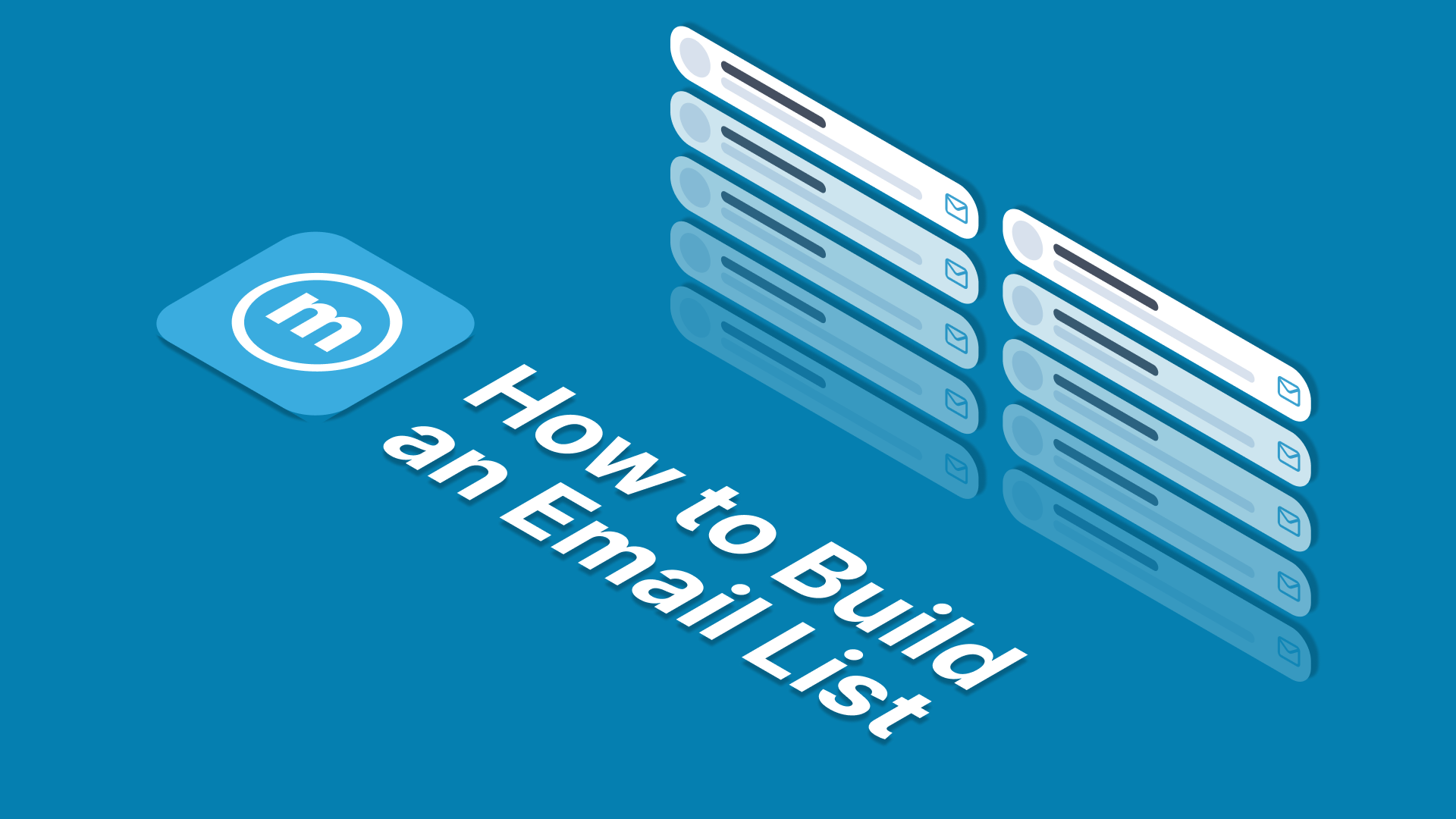12 Best Way to Build an Email List: A Comprehensive Guide

Email marketing remains one of the most powerful tools for engaging customers, fostering relationships, and driving conversions. Building a robust email list is the foundation of successful email marketing strategies. Here's a comprehensive guide on the best practices for growing and nurturing your email list.
1. Understand Your Audience
Understanding your audience is the cornerstone of successful email list building. It involves diving deep into the demographics, behaviors, preferences, and pain points of your target audience. Start by creating detailed buyer personas that represent your ideal subscribers. These personas should encompass factors like age, gender, location, interests, challenges, and goals.
Conduct surveys, analyze website analytics, and engage in social listening to gather insights. By comprehending what drives your audience, you can craft tailored content and offers that resonate with their needs, increasing the likelihood of them willingly subscribing to your email list.
Moreover, understanding your audience extends beyond demographics; it's about comprehending their journey and where they are in the buying cycle. Are they seeking information, comparing options, or ready to make a purchase? This knowledge helps in crafting targeted messaging at various stages of the customer journey.
For instance, offering educational content to those in the awareness stage, while providing discounts or testimonials to those in the decision stage can significantly impact the effectiveness of your email campaigns. Continuously refining your understanding of your audience through feedback loops ensures your content remains relevant and engaging, fostering a stronger connection and higher subscription rates.
2. Create Compelling and Valuable Content
Crafting compelling and valuable content is fundamental to attracting and retaining subscribers. It involves creating content that educates, entertains, or solves problems for your audience. The key is to offer information that is both relevant and valuable to your audience's needs and interests.
This content can take various forms, such as blog posts, videos, infographics, or podcasts, catering to different preferences and consumption habits. By consistently delivering high-quality content, you establish credibility and trust, encouraging visitors to subscribe to receive more of this valuable information.
Furthermore, your content should address pain points or challenges your audience faces, positioning your emails as a solution provider rather than just promotional messages. Value-driven content demonstrates your expertise and fosters a stronger relationship with your audience.
Incorporating storytelling or case studies into your content can also resonate deeply with readers, making it more relatable and engaging. By continuously evaluating the performance of your content and adapting based on audience feedback, you can refine your approach, ensuring that your emails consistently deliver compelling and valuable content that encourages subscriptions and long-term engagement.
3. Optimize Subscription Forms
Optimizing subscription forms involves streamlining the process of signing up for your email list. Simplify the form fields to only ask for essential information, such as name and email address, reducing friction and increasing the likelihood of sign-ups. Additionally, use clear and compelling copy on your forms that highlights the benefits of subscribing.
Implementing a strong call-to-action (CTA) that stands out and prompts action is crucial. Furthermore, consider the placement of these forms—ensure they are strategically positioned on your website, visible but not intrusive. A/B testing different form designs and placements can provide insights into what works best for your audience, helping refine and optimize your subscription process for maximum conversions.
4. Offer Incentives for Subscriptions
Offering incentives is a powerful way to encourage visitors to subscribe to your email list. These incentives can vary from exclusive content, discounts, free trials, to downloadable resources like eBooks or guides. The key is to make the incentive enticing enough that visitors perceive subscribing as beneficial. Clearly communicate the value they'll receive by subscribing and prominently display these incentives across your website or landing pages.
Additionally, time-sensitive offers or limited availability of incentives can create a sense of urgency, motivating visitors to take immediate action and subscribe to avail themselves of the offer.
5. Leverage Social Media and Landing Pages
Leveraging social media involves using these platforms to drive traffic to dedicated landing pages optimized for email sign-ups. Promote your email list across various social media channels, highlighting the benefits of subscribing. Use engaging visuals, compelling copy, and direct calls-to-action that lead users to specific landing pages designed for conversion.
These landing pages should be focused, with a clear message and an easy-to-complete subscription form. Consistency in messaging between social media posts and landing pages reinforces the value proposition and increases the likelihood of conversion.
6. Run Contests or Giveaways
Contests and giveaways are effective tactics to rapidly grow your email list. They create excitement and incentivize participation by requiring users to subscribe or perform specific actions, such as sharing content or tagging friends, to enter the contest. Ensure that the prize aligns with your audience's interests to attract relevant subscribers.
Promote the contest or giveaway across different channels, including social media, your website, and email newsletters, to maximize visibility and participation. Post-contest, engage with new subscribers by delivering valuable content to maintain their interest and nurture these leads into long-term subscribers.
7. Use Lead Magnets and Content Upgrades
Lead magnets and content upgrades are valuable resources offered to visitors in exchange for their email addresses. These can include eBooks, whitepapers, templates, or exclusive access to webinars. Strategically place these offers within your content, ensuring they align with visitors' interests. Tailor your lead magnets to address specific pain points or provide solutions that your audience seeks.
Furthermore, use compelling calls-to-action and clear descriptions to highlight the benefits of downloading or accessing these resources. Continually updating and diversifying your lead magnets keeps your offerings fresh and enticing, driving ongoing subscription growth.
8. Implement Referral Programs
Referral programs incentivize your current subscribers to refer friends or contacts to join your email list. Offer rewards or exclusive perks to both the referrer and the new subscriber, motivating your existing audience to actively promote your content.
Ensure that the referral process is straightforward and easy to execute, providing clear instructions on how subscribers can share their unique referral links. Monitoring the success of your referral program and regularly optimizing incentives based on subscriber feedback ensures continued engagement and encourages a sense of community among your subscribers.
9. Personalize and Segment Your Emails
Personalization and segmentation are pivotal in creating targeted and relevant email content. Utilize subscriber data to segment your audience based on demographics, behaviors, or engagement levels. Craft personalized messages that resonate with each segment, addressing their specific needs or interests.
Implement dynamic content within emails to tailor information based on subscriber preferences. Continuously analyze open rates, click-through rates, and other metrics to refine your segmentation strategies, ensuring that subscribers receive content that feels tailored to their individual preferences.
10. Maintain Engagement and Relationships
Consistently engaging with your email subscribers is crucial for fostering long-term relationships. Regularly send valuable and relevant content, striking a balance between informative, entertaining, and promotional content. Encourage interaction by asking for feedback, conducting surveys, or hosting Q&A sessions.
Personalize communications by addressing subscribers by name and showcasing user-generated content or success stories. Respond promptly to inquiries or feedback, showcasing your commitment to customer satisfaction. By nurturing these relationships, you build trust and loyalty, reducing unsubscribes and increasing engagement rates.
11. Employ Interactive Content Strategies
Integrate interactive elements into your emails to captivate subscribers and encourage engagement. Interactive content, such as quizzes, polls, surveys, or clickable elements like image carousels, increases interaction rates and provides valuable insights into subscriber preferences.
Use these insights to tailor future content and improve the overall subscriber experience. Experiment with different interactive formats to discover what resonates best with your audience, keeping your emails fresh and engaging.
12. Monitor, Analyze, and Optimize
Regularly monitor the performance of your email campaigns through analytics. Track key metrics such as open rates, click-through rates, conversion rates, and subscriber growth. Analyze the data to identify trends, patterns, and areas for improvement.
Use A/B testing to experiment with different subject lines, content formats, or sending times to optimize email performance. Continuously refine your strategies based on these insights, adapting your content and approaches to better serve your audience and maximize the effectiveness of your email marketing efforts.
Those are 12 ways to build an email list that are proven to be effective for you to start now. You can get more information regarding this if you visit our blog page. Or try our free email service here and start building your email list there!
(V.V)

